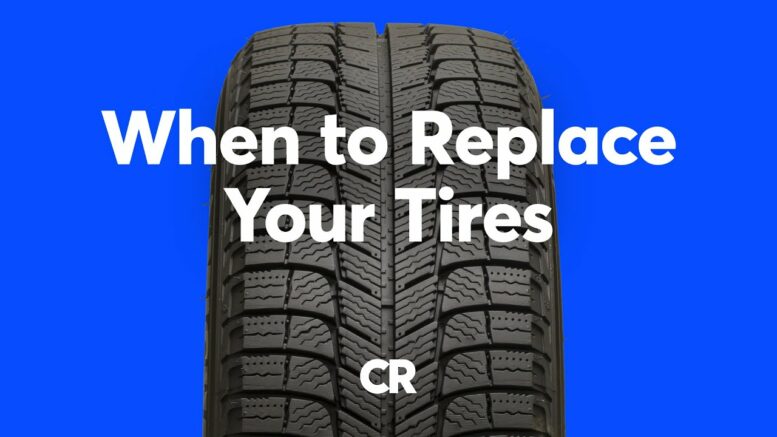The lifespan of a tire can range anywhere from 25,000 miles to 100,000 miles. The experts at CR show you how to check your tires so you’ll know exactly when to replace them.
Check out for the latest reviews, tips, and recommendations and subscribe to our YouTube Channel:
Follow Us on Social:
Instagram:
Facebook:
Twitter:
Pinterest:






In cross section a tire is close to perfectly round. The recommended inflation pressure is the pressure that allows the maximal cross sectional surface area to be in contact with the road. If a tire is under-inflated a portion of the sidewall that is not designed to bear the weight of the car comes into contact with the road. This increases the friction between tire and road as the tire rotates. The results are excessive tire wear and reduced gas mileage. If the tires are inflated above the recommended pressure the portion of the tire tread that contacts the road is reduced. Picture the very small surface area of a fully inflated balloon that contacts a flat surface on which the balloon is resting. The diminished amount of tire tread in contact with the road reduces breaking efficiency and increases tire wear in the middle of the tread.
What about the issue of age of the tires, regardless of mileage or wear? I know there are many factors that play into that, but seems to me it is worth mentioning as another factor to consider when thinking about tire replacement.
Yeah, they definitely can dry rot. They will be all cracked on the sidewalls. Grandparents cars can be susceptible to this, because they may only drive 1k miles a year. My inlaws had a 96 camry with original tires over 10 years later.
Avoid tire shine too. Cheap tire shine products can actually tires to dry rot, exceptionally fast, through removing chemical preservatives in the tires.
Great information. However, Jen, your quarter test was a bit confusing. You stated if you can “clearly” see the top of his head, it’s time to shop tires. I think I know what you were getting at (once his head starts to disappear it’s too late and your tires are worn). But, I can see people putting a quarter in their brand new tires, “clearly” seeing the top of GW’s head, and then thinking they need new tires…which of course was not the point. I originally thought you said, “when you CAN’T clearly see the top of his head….” But after listening a few more times, I believe you said, “can clearly….”. Might want to clarify that point! Great show! Love you guys. Just had my dad replace his tires due to age, not miles and wear…his were 10 years old and were the tires originally on his 2013 Accord, but only had 40k miles on the car…they were dry and I found a slight bulge on the side of one of the tires, so had him replace them. GTG!
How about benefits on mounting? I’ve had great treadlife and wear when using a company that uses a road force balance vs a normal spin when balancing new tires. Thoughts or data on this?
Two things I’ll spend for the best are tires and brakes. We have a lot of rutted asphalt which pools water making it easy to hydroplane so I always replace tires early.
I use the Penny test. What’s with the quarter now?
Just buy a tire depth gauge, then no more confusion.
It’s the only thing between you and the ground I only buy 60000 mile tires or less
This is what I call necessary content
Just touch the wear marks with your finger and compare with left/right and front/rear. Rotate tires if you clearly feel the difference. Coins are obsolete.